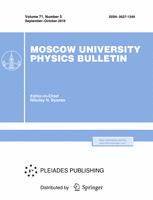В последние годы кремниевые нанонити (КНН) привлекают значительное внимание исследователей благодаря своим уникальным электрическим и оптическим свойствам, которые делают их перспективными для применения в различных областях, включая наноэлектронику и сенсоры. Настоящая работа представляет собой углубленное и систематическое исследование КНН, синтезированных из кристаллических пластин с сопротивлениями 10–20 Ом·см и 1–5 мОм·см, с целью детального анализа их электрических свойств. Основное внимание уделяется вольт-амперным характеристикам (ВАХ), частотной зависимости проводимости и исследованию импеданса. Эти методы позволяют выявить ключевые аспекты, определяющие поведение наноструктур, и установить взаимосвязь между характеристиками кристаллической пластины и электрофизическими свойствами материала. Полученные результаты показывают значительные изменения в поведении проводимости при снижении сопротивления кристаллической пластины, что может свидетельствовать об улучшении электрофизических характеристик КНН. Вольт-амперные характеристики образца с сопротивлением 1–5 мОм·см для обеих конфигураций (планарной и сэндвич), а также сэндвич конфигурация образца с сопротивлением 10–20 Ом·см демонстрируют отчетливое диодоподобное поведение, что можно объяснить формированием потенциальных барьеров на границе между слоями. Механизм прыжковой проводимости оказывается доминирующим для всех образцов.
$^1$undefined\
$^2$Институт биологического приборостроения РАН



